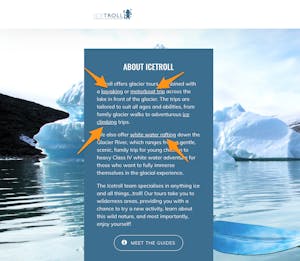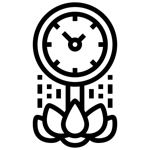- 12 minute read
- Content Marketing
- Local Strategies
- SEO
- Websites
A Step-By-Step Guide to Creating a Link Building Strategy
Beginner
Join hundreds of other operators and REGISTER NOW for Spark 2024 New Orleans October 13-15th!

You’re within striking distance of the coveted first page of Google – you’ve been running periodic SEO audits, creating quality content, and targeting keywords that fit your business – but your site is still hovering on page two of the SERP. It’s normal to feel discouraged, but the good news is that ranking on the second page of Google offers quick SEO wins and the most value for the effort you put into your site strategy. Keep reading for ways to boost your rankings* with on-page SEO.
*Note: These tips are intended for web pages that rank on the second page of Google, within positions 11-20. If your site ranks a few pages back, focus on things like SEO best practices and keyword research to improve your ranking. This guide is a great place to start – and a helpful reminder that it takes time to see your rankings improve, even to get to the second page of Google.
To show up on the first page, your site’s content must be exceptional. It’s not enough to target the right keywords and write relevant content – you also need to focus on content length and search intent. The results on the first page are there because readers find them useful. They provide the information that the searcher was looking for. To make your content go the extra mile, review our guide on understanding search intent and be sure that your pages are written with those principles in mind.
To get a better understanding of search intent for the keywords you are targeting, run a search for a particular term and take a look at the pages that rank on the first page of Google:.
 Pro tip: Perform a competitor analysis to help determine what new content you should add to your page. Ask yourself, how can you expand on what others have already written to be more helpful to a searcher? As you do this, take note of content length, especially for the top 5 results, and see how the length of your content compares. Try to match the format of what’s already ranking highly on Google for best results.
Pro tip: Perform a competitor analysis to help determine what new content you should add to your page. Ask yourself, how can you expand on what others have already written to be more helpful to a searcher? As you do this, take note of content length, especially for the top 5 results, and see how the length of your content compares. Try to match the format of what’s already ranking highly on Google for best results.
Equally as important as content length is the readability of your copy. Using overly long sentences (over 20 words), creating large blocks of text without headings or bullets, and omitting images could be hurting your ranking.
 Pro tip: For informational pages and blog posts, target long-tail keywords (longer, more specific search terms with at least 3 words) to start ranking on the first page. Not only are there more long-tail keywords out there than popular, shorter keywords, but they also account for 70% of all searches (Neil Patel).
Pro tip: For informational pages and blog posts, target long-tail keywords (longer, more specific search terms with at least 3 words) to start ranking on the first page. Not only are there more long-tail keywords out there than popular, shorter keywords, but they also account for 70% of all searches (Neil Patel).
Text location on a website matters – Google generally places more significance on the text that appears near the top of a web page, so make sure to feature the most important information first because you could be missing out on rankings if you bury the key information too far down the page.
When answering common questions be sure to answer the query first (with keywords!), then provide further detail below. A small change in the placement of keywords within a paragraph or the placement of a heading can make a big difference.

You’ve probably got these SEO basics down, but it never hurts to go back and make a few adjustments to your meta descriptions and title tags, especially since your keyword strategy might have changed slightly since publishing the pages.
Having at least one image improves user experience and makes a page with lots of content go from boring to interesting. According to the Backlinko Search Engine Ranking Study, pages with at least one image rank better than those without. Plus, in an exciting industry like ours, photos of your tours and activities are definite selling points.
Another way to improve ranking is to add a video since they capture people’s attention and provide another way to share information. Don’t use videos on every single page, however, since they could slow down your site speed. As with most things SEO and content, using videos is all about finding a balance. Check out this guide for more information.

Another easy way to move your pages from page 2 of Google to page 1 is to boost page speed, the time it takes for your web page to load. Let’s face it – if your page doesn’t load quickly (ideally under 2 seconds), people are going to be quick to move on to the next result. And with more and more searches being done on mobile, searchers expect instant results and fast load times. Plus, page speed is a major ranking factor.
Start by checking your site speed with a tool like Page Speed Insights from Google. You’ll see your current page speed as well as elements you can improve to make your site load faster. For additional insights, learn how to run a Lighthouse audit on key pages of your site. You can also look into image optimization and speed optimization plugins.
Creating an external link-building strategy is an important and highly effective SEO practice that takes time and effort to execute. If you’re focusing on pushing your site from page 2 to page 1 of Google, you can use internal links to your advantage.
Here is an example of how we use internal links on Compass, to help readers find additional information that may be of interest to them.

What page are you trying to move to the first page of Google? Include links on other, relevant pages of your website to that page. This way, people browsing your site will be more likely to view the page for which you want to improve ranking. Increased page traffic is an indicator to Google that the information contained within the page is important. 
For a more comprehensive look at link building and internal vs. inbound links, take a look at this guide.
 Give It Time
Give It TimeYour page 2 content might feel invisible, but remember that those pages are well-positioned to earn one of the top 10 spots on Google. It only takes a few adjustments to start seeing meaningful improvements so whether you’re trying to boost a blog post or an activity page, give these tips a try and remember to be patient – changes in ranking don’t happen overnight. See you on page one!